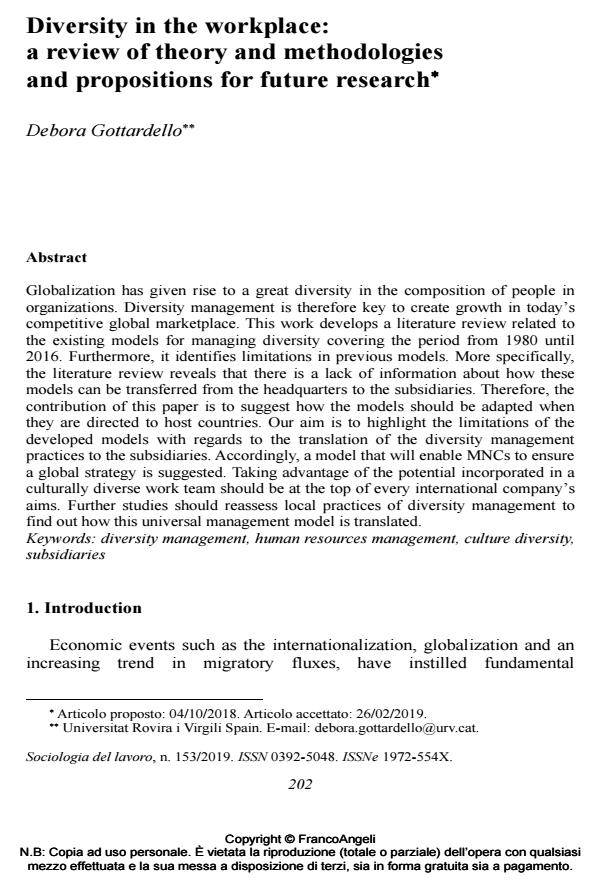Diversity in the workplace: a review of theory and methodologies and propositions for future research
Journal title SOCIOLOGIA DEL LAVORO
Author/s Debora Gottardello
Publishing Year 2019 Issue 2019/153
Language English Pages 20 P. 202-221 File size 383 KB
DOI 10.3280/SL2019-153012
DOI is like a bar code for intellectual property: to have more infomation
click here
Below, you can see the article first page
If you want to buy this article in PDF format, you can do it, following the instructions to buy download credits

FrancoAngeli is member of Publishers International Linking Association, Inc (PILA), a not-for-profit association which run the CrossRef service enabling links to and from online scholarly content.
Globalization has given rise to a great diversity in the composition of people in organizations. Diversity management is therefore key to create growth in today’s competitive global marketplace. This work develops a literature review related to the existing models for managing diversity covering the period from 1980 until 2016. Furthermore, it identifies limitations in previous models. More specifically, the literature review reveals that there is a lack of information about how these models can be transferred from the headquarters to the subsidiaries. Therefore, the contribution of this paper is to suggest how the models should be adapted when they are directed to host countries. Our aim is to highlight the limitations of the developed models with regards to the translation of the diversity management practices to the subsidiaries. Accordingly, a model that will enable MNCs to ensure a global strategy is suggested. Taking advantage of the potential incorporated in a culturally diverse work team should be at the top of every international company’s aims. Further studies should reassess local practices of diversity management to find out how this universal management model is translated.
Keywords: Diversity management, human resources management, culture diversity, subsidiaries
- “We choose this CV because we choose diversity” – What do eye movements say about the choices recruiters make? Sayaka Osanami Törngren, Carolin Schütze, Eva Van Belle, Marcus Nyström, in Frontiers in Sociology 1222850/2024
DOI: 10.3389/fsoc.2024.1222850 - Towards a Better Workplace Environment—Empirical Measurement to Manage Diversity in the Workplace Elwira Gross-Gołacka, Teresa Kupczyk, Justyna Wiktorowicz, in International Journal of Environmental Research and Public Health /2022 pp.15851
DOI: 10.3390/ijerph192315851
Debora Gottardello, Diversity in the workplace: a review of theory and methodologies and propositions for future research in "SOCIOLOGIA DEL LAVORO " 153/2019, pp 202-221, DOI: 10.3280/SL2019-153012